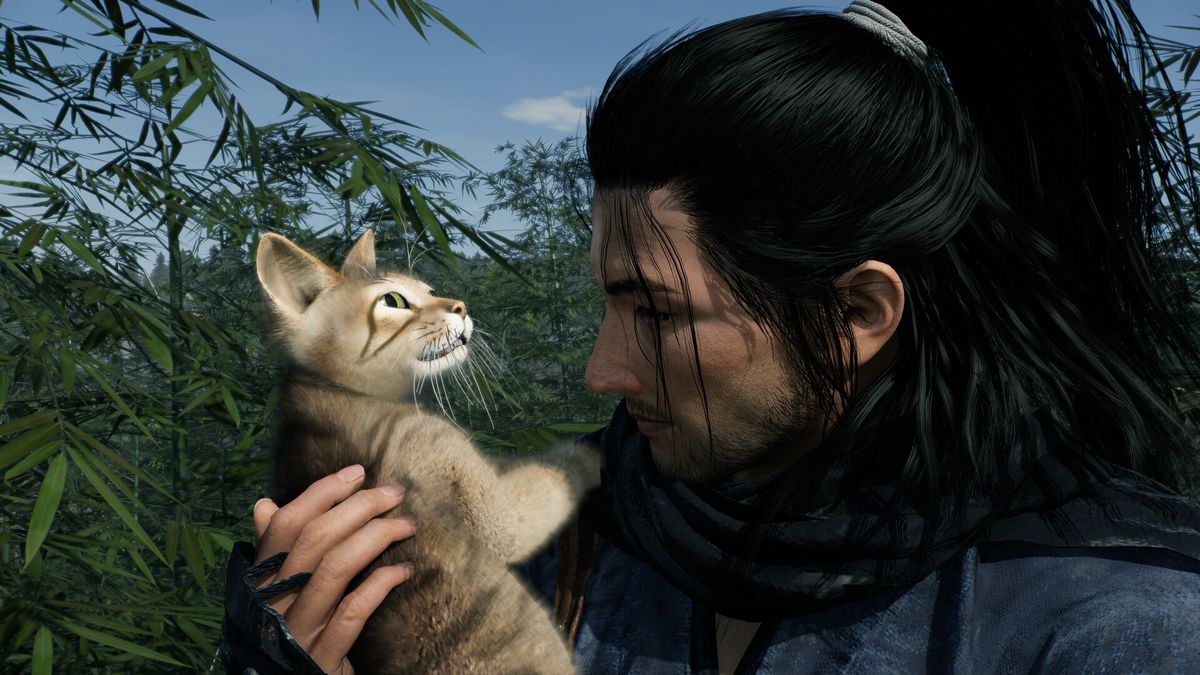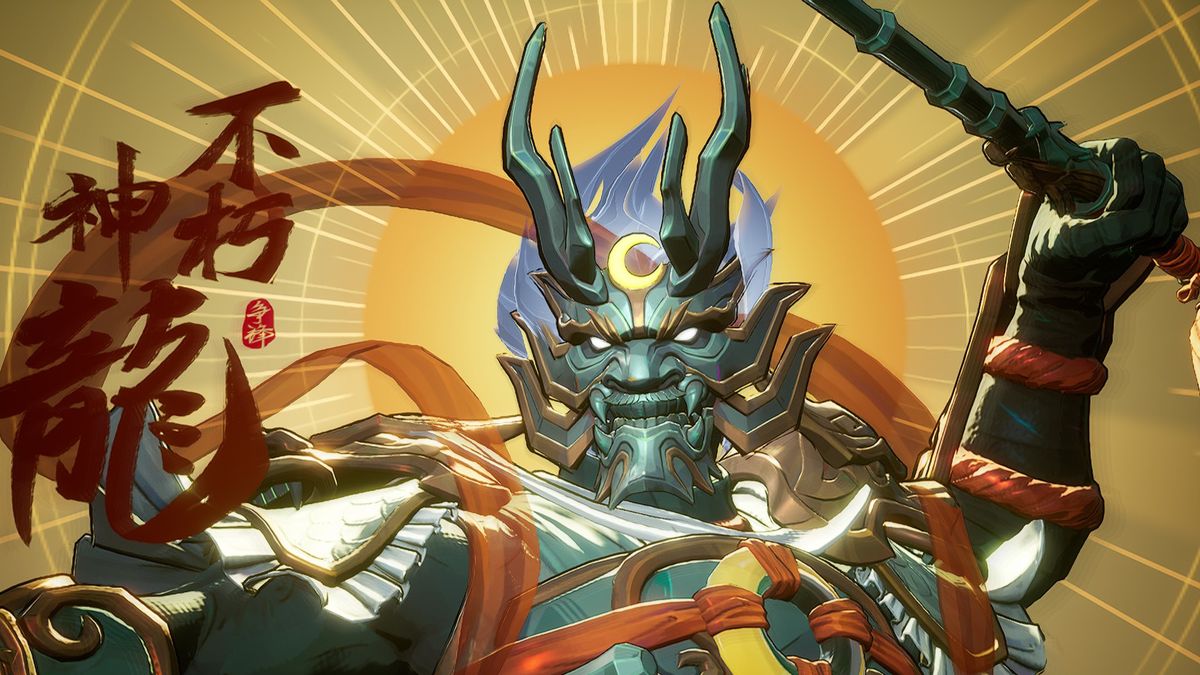A typically snappy entry in the best series that action tower defence has to offer, held back by a repeating roguelite structure that's only partially successful.
It never goes well for the greenskins at the vanguard of an orc invasion force, but spare a thought for the guys in the second row - no less doomed, and with the added dread of seeing precisely what's coming to them. "Is it just me," bellows one orc to another in a goofy baritone, over the boom of drums and cannon fire, "or are these traps getting stronger?" Seconds later, he rounds the corner into a shipyard and steps onto a briar patch which, by rights, ought not to be there. Not to mention the auto-crossbows firing from the ceiling, the plants belching poison from the corner, and the saw blades ricocheting off the walls. Uruk-bye, my perceptive friend. That's a four-times combo.
In the most fundamental sense, it's business as usual. Orcs Must Die! is a series about protecting a portal, or two, at the centre of a map from encroaching waves of fantasy monsters. You do so by creating elaborate Rube Goldberg deathzones for your imminent guests - laying down barricades to block off routes before guiding the flow of orcs, ogres, trolls and frost giants towards choke points, which you then fill with careering mine carts, pits of tar and dispensers of boiling hot molten gold. If you can stick a single enemy with five, six or seven different methods of pain-giving before they're finally torn in half, you’ll get extra cash for the combo, which is spent fending off subsequent waves with further traps.
It's tower defence, then, but with the breathless twist of a ground-level perspective, and a responsibility to dive into the fray even as you try and hold a high level strategy in your head. It's both art and science - handing you a gridded map you could halfway-solve on graph paper, but for the fact that no plan survives contact with a live environment. You can't always account for the physics flip-trap that sends a single orc wide, hurtling towards the rift from a path you thought closed off completely, forcing you to sprint after it, your blunderbuss shouting, "Stop!".
As hybrid genre formulae go, it's one of the finest ever conceived, and has seen the series safely into its second decade, even after a painfully ignored detour into Tencent-funded PvP. This new version is, in the playing, as good as any before it. And it's cheap to boot - the sort of game you could ask your co-op mates to stump up for without prompting a cost-benefit analysis in the WhatsApp group.




The orc with the lovely baritone was right, though. The traps are getting a little stronger - very gradually, match after match, as I slowly push back the borders of Orcs Must Die! Deathtrap's progression system - and it's this wider structural change to the way the series works that I'm less sold on.
On the one hand, I'm picking up enough golden skulls from the bodies of my enemies to unlock one, two or even three new trap types to play with after every run. Ooo - now I can freeze flying gargoyles with icy ballistas, or lay down a cursed paving flag that becomes more deadly with every soul it consumes, making it a long-term tactical investment. These are undeniably exciting additions to my arsenal that leave me eager to switch up my loadout and uncover new possibilities.
Outside that, however, I'm handing over my hard-won resources to improve the reset speed of burning coals by half a second, or slightly reducing the cost of an arrow-wall so that I can install a couple more per wave. These sorts of highly incremental, barely perceptible upgrades are very modern, aren't they? The ones designed to keep you tending to a screen-filling skill tree, chasing percentage increases across hundreds of hours, rather than tens. Yet I'm rarely convinced they're better for the player than chunky, tangible choices they can feel altering their playstyle.
 Image credit: Eurogamer/Robot Entertainment
Image credit: Eurogamer/Robot Entertainment
These background systems tie into a roguelite run structure that replaces the more traditional campaigns of previous Orcs Must Die! games. And there, it must be said, you're presented with meaningful options at every juncture. Before every stage, you're given a choice of three maps, each of which has a different negative modifier attached to it. You might decide you can handle a couple of extra Fire Elementals per wave, or are prepared to work around double-price ceiling traps. You'll weigh that decision against your familiarity with the maps themselves - most of which you'll know from previous runs.
After each wave of enemies you'll pick up Threads, magical boons which stack over the course of a run and can shift your approach as you take advantage of, say, a boost in fire damage if an orc is already coated in tar, or double pain helpings from your crossbow once your ultimate is activated. And at the end of a level, you'll decide whether to bank your earnings and return to base for upgrades, or bet a large chunk of your skulls on the conviction that you can handle another map. After a couple of such adventures, you'll be faced with a boss level that will lay you low the first few times you attempt it. Should you win, your next run will be elongated, and your map selection slightly expanded.
 Image credit: Eurogamer/Robot Entertainment
Image credit: Eurogamer/Robot Entertainment
While Deathtrap is very playable in single-player, it's also designed around four-player co-op - and from that point of view, this roguelike business makes quite a bit more sense than a lengthy campaign. No longer will a drop-in companion find themselves halfway up someone else's difficulty curve, struggling for air. Now, everybody's starting fresh together, even if their individual skill trees might be growing at different rates. What's more, while levels can last up to an hour, you're free to quicksave at their conclusion and come back to a run later. In all this, Orcs Must Die! has never been more approachable.
Like the Cyclops Druid who insists on flying over my barricades, however, I must admit I prefer the old ways. Part of the creative and strategic joy of the series has always been the process of figuring out a map for the first time - experimentally plonking down barricades, your most powerful tool, to discover how you might funnel monsters coming from multiple doors into one, glorious corridor of death. There might be different ways of doing it, but the solution is yours, and that eureka moment only comes once per level.
 Image credit: Eurogamer/Robot Entertainment
Image credit: Eurogamer/Robot Entertainment
By asking you to repeat a handful of maps across its roguelike structure, Deathtrap ensures those moments come about much less frequently. That's not to say that developer Robot Entertainment has failed to think of ways to keep things fresh. Upon returning to a familiar map, you might find that Rift corruption has entangled your favourite choke point in grim, grey roots, forcing you to rethink your plans; or that an end-of-level boon has made wall traps 50 percent more effective, causing you to ditch your usual ceiling lasers. There are strong incentives for teaching yourself new tricks.
Nonetheless, in the 18 or so hours I've spent in Deathtrap's company, I've spent 45 minute stretches fighting battles already solved - shunting orcs down the same routes when I'd rather have moved on to new layouts that prompted different solutions. During the first map of a run in particular, the challenge level can be underwhelming for a veteran, before rising sharply for a boss encounter that, more often than not, ends with a serious hit to your resources. Failure might be part of the roguelite parcel, but faced with the prospect of unnecessary repetition, I'm more inclined to return to Orcs Must Die! 3 for the second campaign I never quite got around to.
 Image credit: Eurogamer/Robot Entertainment
Image credit: Eurogamer/Robot Entertainment
There are other, smaller issues with the moment-to-moment magic of playing Orcs Must Die! Deathtrap. Beyond some opening videos, there's a curious lack of tutorialisation which meant, across multiple maps, I had no idea the aforementioned Druid could 'silence' my character with his eye laser - leading me to swear fruitlessly as my ultimate failed to activate, and ogres plunged into the Rift. But the fundamentals are so winning that I've had a largely fantastic time in its company regardless.
There's something about the meeting of deep strategic thinking and chaotic third-person imprecision that tickles the brain like nothing else - the sweet spot that renders Orcs Must Die! both a casual distraction and an engrossing equation. Deathtrap explores the full spectrum of that identity better than ever before - following maps like Town Plaza, a mathsy network of right angles and tight bridges begging to be cancelled out with barricades, with the wide-open bloodbath of Dry Docks. The latter pushes you to master the MOBA-like synergies of your character abilities - a welcome hangover from the Tencent days.



In the most important ways, Deathtrap is still wonderfully old-fashioned - eschewing the apologetic design that finds many modern developers tweaking the fun out of their creations in a process of death by patch note. It's happy to let you break its systems with lucky combinations of Threads and traps which can generate more cash than you know what to do with once they click into place. When that happens, you simply stand back and laugh at the factory line mass murder you've facilitated, all fire and lighting and really sharp spikes.
Then, before you can get bored, it's all wiped away for you to start anew on the next level. In the past, I've compared the feeling of playing Orcs Must Die! rather pompously to Buddhist sand mandalas - the extraordinary artworks which are ritualistically destroyed as a reminder of the transitory nature of life. And hey, I stand by it. To pick a less pretentious reference point: a thing isn't beautiful because it lasts. And this daft thing that Orcs Must Die! has us doing, feeding both id and ego at once, is one of the most beautiful and underrated experiences gaming has to offer. No amount of roguelike revisions to the formula can change that.
A copy of Orcs Must Die! Deathtrap was provided for review by developer Robot Entertainment.

 1 day ago
7
1 day ago
7








 English (US) ·
English (US) ·